How to present a product development plan?

In this comprehensive guide, I'll walk you through the ins and outs of presenting a seamless product development plan, providing you with practical examples and ready-to-use templates to get you started. Whether you're a seasoned professional looking to streamline your approach or a newcomer eager to make your mark, this article is designed to equip you with all the necessary tools and insights. I've tried to cover everything from the basics of what a product development plan entails to the nitty-gritty of overcoming common challenges and leveraging professional tools to enhance your process. So grab a cup of coffee, and let's visit the world of product development planning—where clarity meets creativity!
What is a product development plan?
A Product Development Plan is essentially your product roadmap for bringing a new product to life and successfully launching it into the market. Think of it as your strategic playbook, detailing every step from initial concept to final rollout.
This plan isn't just a list of tasks; it's a comprehensive outline that includes timelines, budget estimations, market research, and specific milestones that your team aims to hit along the way. It aligns your team's efforts and ensures that everyone, from designers to marketers, understands their roles and deadlines.
By laying out each phase of the development process, this plan helps prevent hiccups and ensures that your new product not only meets market needs but does so on time and within budget. Whether you're crafting a cutting-edge tech gadget or launching a new snack, a solid product development plan is your first step towards a successful market entry.
Why is a product development plan important?
It is more than just a necessary document—it's a vital component in the lifecycle of a product that ensures efficiency, coherence, and higher chances of success. Here's why this product plan is crucial:
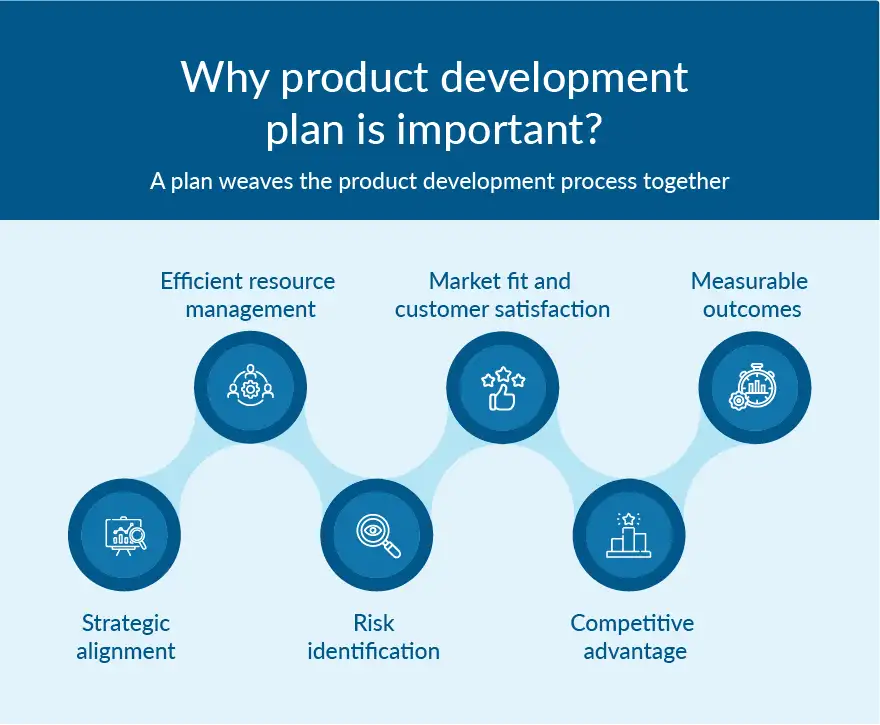
1. Strategic alignment
A well-thought-out plan ensures that everyone from the engineering team to sales and marketing is aligned with the product's goals. This alignment minimizes the risk of miscommunication and ensures that all departments are working toward the same end result.
2. Efficient resource management
It helps you plot out what resources are needed and when, preventing bottlenecks and overallocation. This includes managing everything from budget to personnel and even critical equipment.
3. Risk identification
With a detailed plan, potential risks are identified early on. This proactive approach allows teams to develop strategies to mitigate risks before they become problematic, saving time and money.
4. Market fit and customer satisfaction
By integrating market research and consumer testing into your development plan, you ensure that the product you’re developing fits the market need and resonates with your target audience. This alignment with customer expectations is often what separates successful products from failures.
5. Competitive advantage
A robust development plan can give you a leg up on the competition. It allows for faster adaptation to market changes and customer feedback, which can be crucial in fast-paced industries.
6. Measurable outcomes
Finally, a product development plan sets clear, measurable objectives that help in evaluating the success of a product post-launch. This data is invaluable for continuous improvement and can inform the strategies for future product developments.
Incorporating these elements into a product development plan can transform a chaotic launch into a well-oiled machine, significantly boosting the odds of a product’s success in the market.
Key components (and tips) to CREATE a product development plan
Creating an effective product development plan involves several crucial components, each underpinned by specific strategies to enhance their effectiveness:
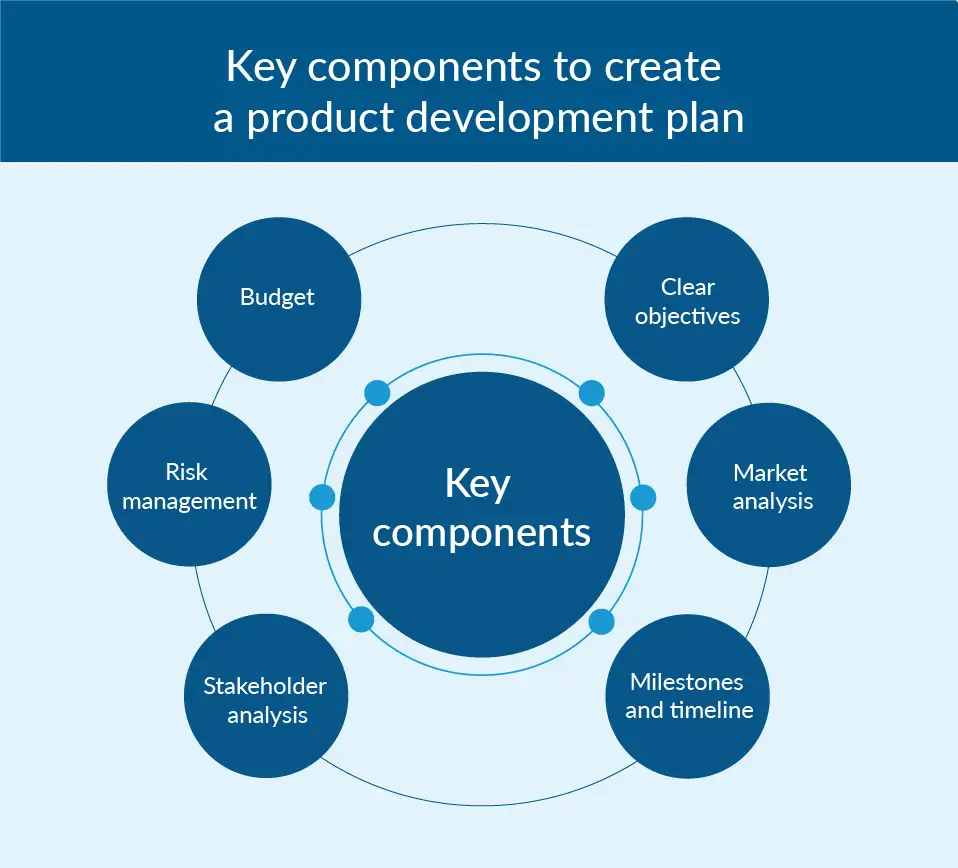
Clear objectives
Start by clearly defining the end goals of your product. Ensure these objectives are SMART (Specific, Measurable, Attainable, Relevant, Time-bound).
Tip: When setting objectives, involve team leads from different departments to ensure goals are comprehensive and achievable from multiple perspectives. For example, when specifying "increase customer satisfaction ratings by 20% within 12 months," check with the customer service and product teams to ensure these targets align with operational capabilities and customer feedback.
Market analysis
Conduct comprehensive research to understand the market size, potential customer demographics, key competitors, and emerging trends and build a market strategy. This will inform many of your decisions throughout the development process.
Tip: Besides traditional market research, consider using social media listening tools to gauge consumer sentiment and identify unmet needs. This real-time data can provide invaluable insights that can pivot your product's direction toward more favorable market conditions.
Milestones and timeline
Develop a timeline with specific milestones that reflect key phases in the product development lifecycle, such as concept approval, prototype completion, and market launch.
Tip: Use product management tools like Gantt charts to visualize timelines and dependencies. Regularly review and adjust timelines as needed to accommodate shifts in project scope or external factors.
Budget
Outline a detailed budget that covers all anticipated costs including research and development, marketing, production, and distribution.
Tip: When planning your budget, always review historical data on similar projects. This can provide a realistic base and help anticipate future expenses more accurately. Also, build in a contingency fund of around 10-20% of the total budget to manage unexpected expenses without jeopardizing the project timeline.
Risk management
Identify potential risks that could impact the project, such as technological changes, supplier instability, or shifts in consumer preferences. Prepare mitigation strategies for each identified risk.
Tip: Establish a 'risk register' that documents all identified risks, their potential impact, likelihood, and mitigation strategies. Update this register regularly and review it in team meetings to ensure that all team members are aware of and actively managing risks.
Stakeholder analysis
Map out all stakeholders involved in or affected by the product development, including internal teams, suppliers, partners, and customers. Understand their interests, influence, and needs.
Tip: Utilize tools like stakeholder maps or matrices to visualize the importance and influence of each stakeholder. Regularly engage with high-priority stakeholders through meetings or updates to ensure their needs and concerns are addressed throughout the development process, fostering a cooperative environment and smoother project execution.
Each of these components plays a vital role in the formation of a comprehensive product development plan, helping teams navigate the complexities of bringing a new product from concept to market. By following these detailed tips, you can enhance each component's effectiveness, making the development process smoother and more successful.
Stages of creating a product roadmap
The product development process not only streamlines the path to a successful launch but also fosters a collaborative environment where communication and teamwork are integral.
Let's explore the product life cycle, breaking down the seven essential phases that will guide you toward a triumphant introduction of your next product.
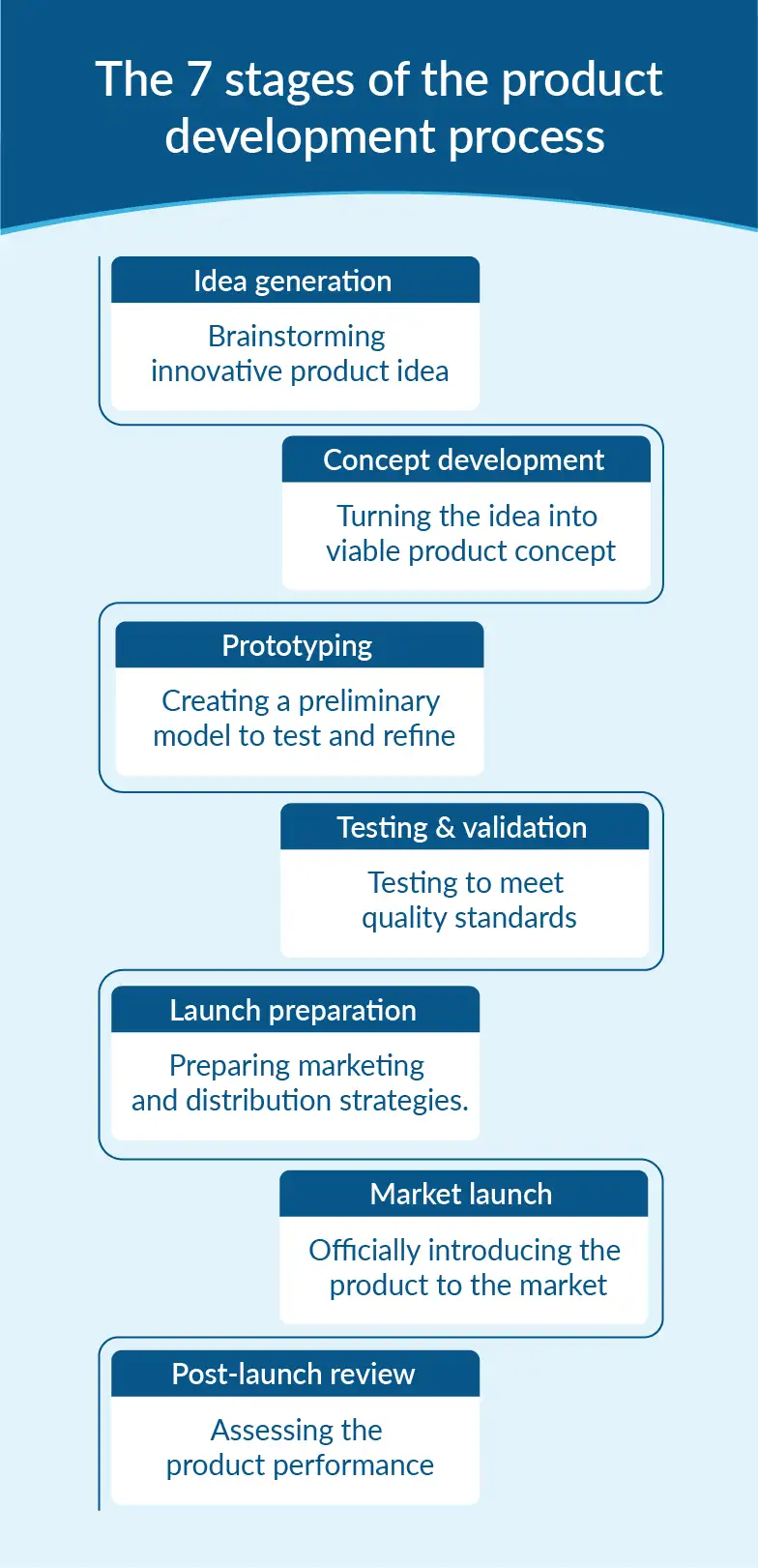
1. Idea generation
This initial stage is all about creativity and innovation. Teams brainstorm to generate a multitude of ideas, leveraging techniques like mind mapping, SWOT analysis, or even structured innovation sessions like Google's Design Sprints. The key here is to foster an open environment where no idea is too bold, and feedback is encouraged.
For example, 3M encourages its employees to spend 15% of their time exploring any new idea that interests them, which led to the creation of Post-it Notes.
2. Concept development
Once you've gathered a range of ideas, the next step is to refine them into viable product concepts. This involves evaluating the ideas against market needs, feasibility, and potential profitability. Tools like a feasibility matrix or concept testing with focus groups can be invaluable here. An example is how Dyson develops multiple prototypes, rigorously testing each to see which best meets the established criteria.
3. Prototyping & product management
Creating prototypes is a crucial step to bringing your concept closer to reality. This stage allows teams to explore different designs, functionalities, and usability aspects of the product. Rapid prototyping techniques, such as 3D printing, allow for fast iterations and refinements based on real-world testing and feedback. For instance, SpaceX uses prototyping extensively to test each component of their rockets before final production.
4. Testing and validation
This phase is all about ensuring the product performs up to standards and meets user expectations. Rigorous testing methodologies, such as alpha and beta tests, user acceptance testing, or pilot runs, are used to validate the product. Collecting detailed feedback and acting on it is crucial. For example, Microsoft often releases beta versions of new software to tech enthusiasts who provide valuable insights that shape the final product.
5. Product launch preparation
Preparing for a product launch involves finalizing the new product idea and developing comprehensive marketing and distribution strategies. This stage ensures that everything is in place for a smooth launch. Developing an effective go-to-market strategy, training sales teams, and setting up distribution channels are key activities.
Apple, for example, excels in creating hype and ensuring wide availability ahead of product launches through well-coordinated marketing and retail strategies.
6. Market launch
The big moment—introducing your product to the market. A successful launch is not just about making the product available; it also involves executing marketing plans, engaging with media, and monitoring initial consumer reactions. Timely and effective communication, promotional events, and leveraging social media can greatly enhance visibility and adoption.
Tesla's live-streamed launch events are a perfect example of creating excitement and immediate consumer interest.
7. Post-launch review and evaluation
After the launch, the focus shifts to assessing how the product performs in the market. This involves analyzing sales data, customer feedback, and performance reviews to understand what worked and what didn’t. This stage is critical for ongoing improvement and for informing future product developments. Learning from both successes and missteps, as Samsung did with the Galaxy Note series, helps refine future product strategies and offerings.
Creating a plan vs presenting a plan
Creating and presenting a product development plan, while both critical, involve distinctly different skills and approaches. Creating a plan focuses on drafting a detailed document that outlines the entire product development strategy. In contrast, presenting the plan involves communicating this strategy effectively to the target audience, ensuring they understand and support the project. When presenting:
- Use clear, concise language and avoid technical jargon.
- Utilize visuals like charts and graphs to make complex information more accessible.
- Be ready to answer questions and provide additional details as needed to address stakeholder concerns.
How to PRESENT an effective product development plan?
When presenting a product development plan, it’s essential to be well-prepared and strategic in your approach to effectively communicate the vision and practical steps of your product’s journey from concept to market. Here are some targeted and informative best practices with additional insights to help you make your presentation on product development impactful:
Know your product in and out
Before you present, thoroughly understand every feature, benefit, and technical aspect of your product. This includes knowing your product’s USP (Unique Selling Proposition), technical specifications, and how it fits into the current market landscape.
Tip: Develop a 'Product Fact Sheet' that outlines all these elements in detail. This will serve not only as a reference for your presentation but also as a handout for attendees to review later.
Set clear goals
Clearly outline the key phases of your product development, such as ideation, prototyping, testing, and market launch. Each phase should be clearly defined with expected outcomes and timelines.
Tip: Use a Gantt chart to visually represent these milestones during your presentation. This helps in showing the timeline and interdependencies of activities at a glance, making it easier for stakeholders to understand the project flow.
Create audience-specific content
Customize your presentation based on who is in the room and what is their communication style. For instance, if you are presenting to stakeholders primarily concerned with the financial aspect, highlight cost management, ROI, and market potential and use graphs/pie charts instead of bullet points. For technical teams, focus on innovation, design challenges, and technical solutions.
Tip: Use Prezent's Communication Fingerprint feature to better understand your target audience and anticipate their expectations for a presentation. In short, this feature helps you grasp the communication personality of your presentation attendees.
Create your fingerprint to know your presentation personality!
Utilize high-quality visuals
Integrate high-quality images, diagrams, or prototype visuals to help convey the complexities of the product development process. Visual aids are crucial in making abstract ideas concrete and engaging.
Tip: Invest time in creating or sourcing professional visuals that can effectively illustrate critical points, such as the product design or user interface. This might include 3D models, user flow diagrams, or high-fidelity mockups.
Emphasize on collaboration
Highlight how cross-functional teams have contributed to the development process and how stakeholder feedback has been incorporated. This demonstrates a collaborative approach and openness to adaptive changes.
Tip: Share specific anecdotes or case studies where feedback led to significant product improvements. This not only makes your presentation more engaging but also underscores the value of collaborative development.
Practice and refine delivery
Rehearse your presentation multiple times to ensure smooth delivery. Pay attention to your timing, clarity, and the effectiveness of your message. Adjust your script and slides based on dry runs or feedback from trusted colleagues.
Tip: Record your practice sessions to identify areas where you might be unclear or where the presentation drags. Adjust accordingly to maintain a dynamic pace and ensure key points are communicated effectively.
Keep a Q&A session
Plan for a robust Q&A session at the end of your presentation to address any concerns or ideas from the audience. This interaction can provide immediate feedback and help gauge the audience’s understanding and interest.
Tip: Prepare to answer potential questions in advance, especially those relating to market viability, budgeting, and technical challenges. This shows preparedness and command over the project details.
Provide comprehensive handouts
Offer detailed handouts at the end of the presentation that include the product development plan, additional data, FAQs, and contact information for follow-up questions.
Tip: Ensure these handouts mirror the presentation’s structure but offer more detail. This allows stakeholders to review the information at their own pace and serves as a reference for further discussions.
By following these steps and incorporating these tips, your product development plan presentation will not only inform but also engage and inspire your audience, facilitating a smoother path to gaining approval and support for your project.
Examples of successful product development process presentations
Successful product development processes often feature a blend of innovative strategies, thorough planning, and acute market awareness. Below are examples of renowned companies that have mastered the art of product development, highlighting their unique approaches and the key takeaways from their success.
Apple Inc.
Strategy: Apple’s product development process is shrouded in secrecy but is known for its customer-centric approach and emphasis on design and user experience. Apple utilizes a cross-functional team structure, where product managers work closely with design, engineering, and marketing teams from the inception of an idea through to its execution.
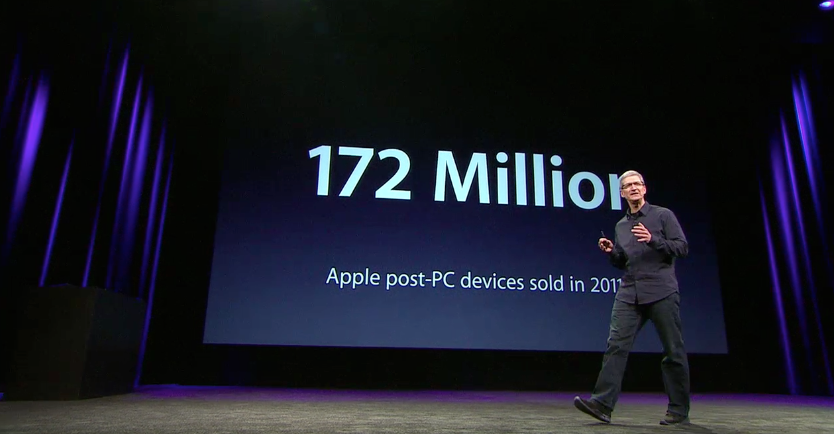
Uniqueness: What sets Apple apart is its commitment to minimalism and functionality, creating products that are both aesthetically pleasing and highly practical. Apple also excels in creating an ecosystem of products that work seamlessly together, encouraging brand loyalty.
What's good about it?
- Integration Across Devices: Apple’s ability to integrate its hardware and software so seamlessly creates a user experience that’s hard to leave once invested in.
- Market Timing: Apple has a knack for releasing products at just the right time, often waiting until a technology matures enough to meet their standards, ensuring their product's success and longevity.
- Brand Loyalty: The strength of Apple’s brand and its loyal customer base often means that new products are almost guaranteed a level of success not afforded to newer brands.
Tesla Motors
Strategy: Tesla's approach to product development involves high levels of innovation with a strong focus on sustainability and technology. They are known for their direct-to-consumer sales model and significant investment in research and development.

Uniqueness: Tesla has disrupted the automotive industry primarily through its emphasis on electric vehicles (EVs) and self-driving technology. Unlike traditional automakers, Tesla updates its vehicle software remotely and frequently, which continuously enhances the vehicles post-purchase.
What's good about it?
- Innovation as a Standard: Tesla’s commitment to innovation isn’t just about new models but improving existing ones through over-the-air updates, keeping customers satisfied and engaged.
- Sustainability: By focusing on electric vehicles, Tesla taps into the growing market of environmentally conscious consumers, setting a trend in the automotive industry.
- Brand Prestige: Tesla has cultivated a brand that stands for more than just cars; it symbolizes forward-thinking and ecological responsibility, attracting a specific demographic of buyers.
Dyson Ltd.
Strategy: Dyson’s product development is characterized by its relentless pursuit of new ideas and improvements in existing technologies, particularly around household appliances. Their development process is heavily invested in engineering and relies on iterative testing and refinement.

Uniqueness: Dyson focuses on solving common problems in unconventional ways, such as their bagless vacuum cleaner or their bladeless fans. This approach not only sets them apart but also establishes them as a leader in innovative product design.
What's good about it?
- Customer-Centric Innovations: Each Dyson product is designed with the end-user in mind, making everyday tasks simpler and more efficient.
- High R&D Investment: Dyson’s significant investment in research and development allows them to bring breakthrough technologies to market that redefine categories.
- Premium Branding: Dyson positions its products as premium, which justifies higher price points and reflects in the product’s quality and innovative features.
These examples demonstrate that successful product plan is not solely about having a great product; it involves strategic planning process, understanding market needs, continuous innovation, creating a brand that resonates with consumers and communicating the same with the target audience. Each company's unique approach provides valuable insights into how diverse strategies can lead to successful outcomes in different industries.
Ways in which Prezent helps in presenting a new Product Development Plan with ease(Get professional templates)
Prezent offers several innovative features that greatly enhance the way teams create and present new product development plans. Here’s how each feature contributes to making presentations more effective and engaging:
1. Story Builder: This tool helps you craft a compelling narrative around your product development plan. By guiding you to organize your thoughts and data into a coherent story, it ensures that your presentation flows logically and keeps the audience engaged from start to finish. This storyline approach is crucial for making complex information more relatable and memorable.
2. Slide Library: Access to a vast library of slide templates allows you to find and use slides that are most relevant to each segment of your product development plan. This feature saves time and ensures a high standard of design quality and consistency across your presentation, making it professional and visually appealing.
3. Auto Generator: Tight on time? The Auto Generator has your back. Just input your data, and voila—a draft of your presentation is ready in no time. This tool is perfect for getting a head start on your slides, especially when you're on a tight schedule but still need to maintain a high standard of presentation.
4. Redesign: Got old slides that need a refresh? The Redesign breathes new life into them by adapting your old presentations to new, sleek templates. This means you can keep your presentations looking fresh and up-to-date without starting from scratch—saving time and boosting consistency.
5. Best Practice Library: It offers access to over 10,000 expert-curated slides and presentations across various roles and functions, democratizing the premium content once exclusive to top-tier consulting firms. Whether you are crafting an executive summary or seeking communication inspiration, the library provides ready-to-use, pre-filled examples to elevate your presentations. Try these Product templates
a) Product development plan presentation template

b) Product launch plan presentation template

6. Courses: Want to sharpen your presentation skills? Prezent offers courses that can help you and your team become pros at creating and delivering impactful presentations. These learning modules cover everything from design principles to strategic storytelling, empowering you to make every slide count.
Using Prezent equips you with a suite of tools that not only streamline the presentation creation process but also enhance the way you communicate your ideas. Discover more about Prezent and its remarkable capabilities by scheduling a demo today. If you prefer hands-on exploration, feel free to explore the features with our 14-day free trial.





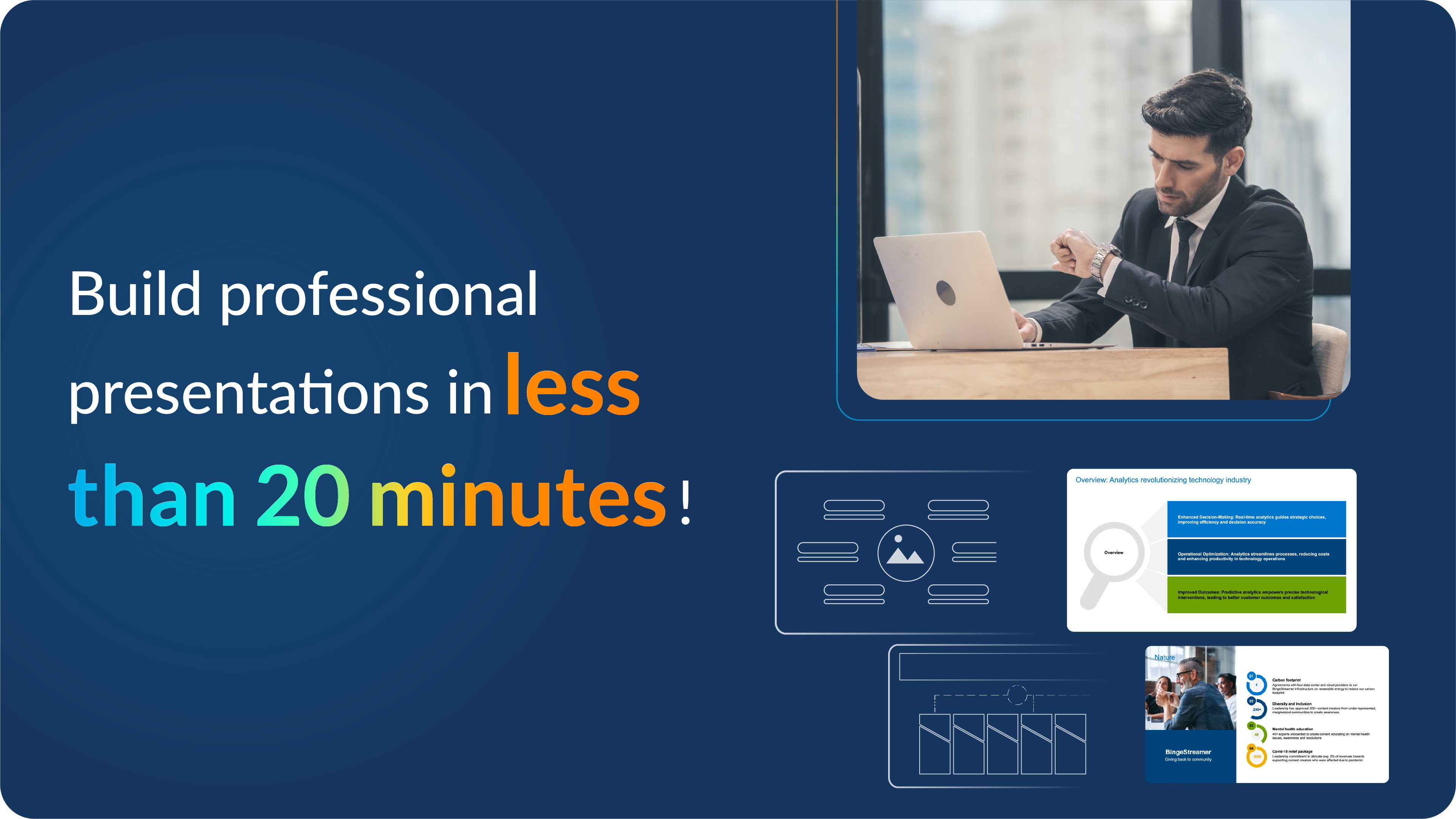


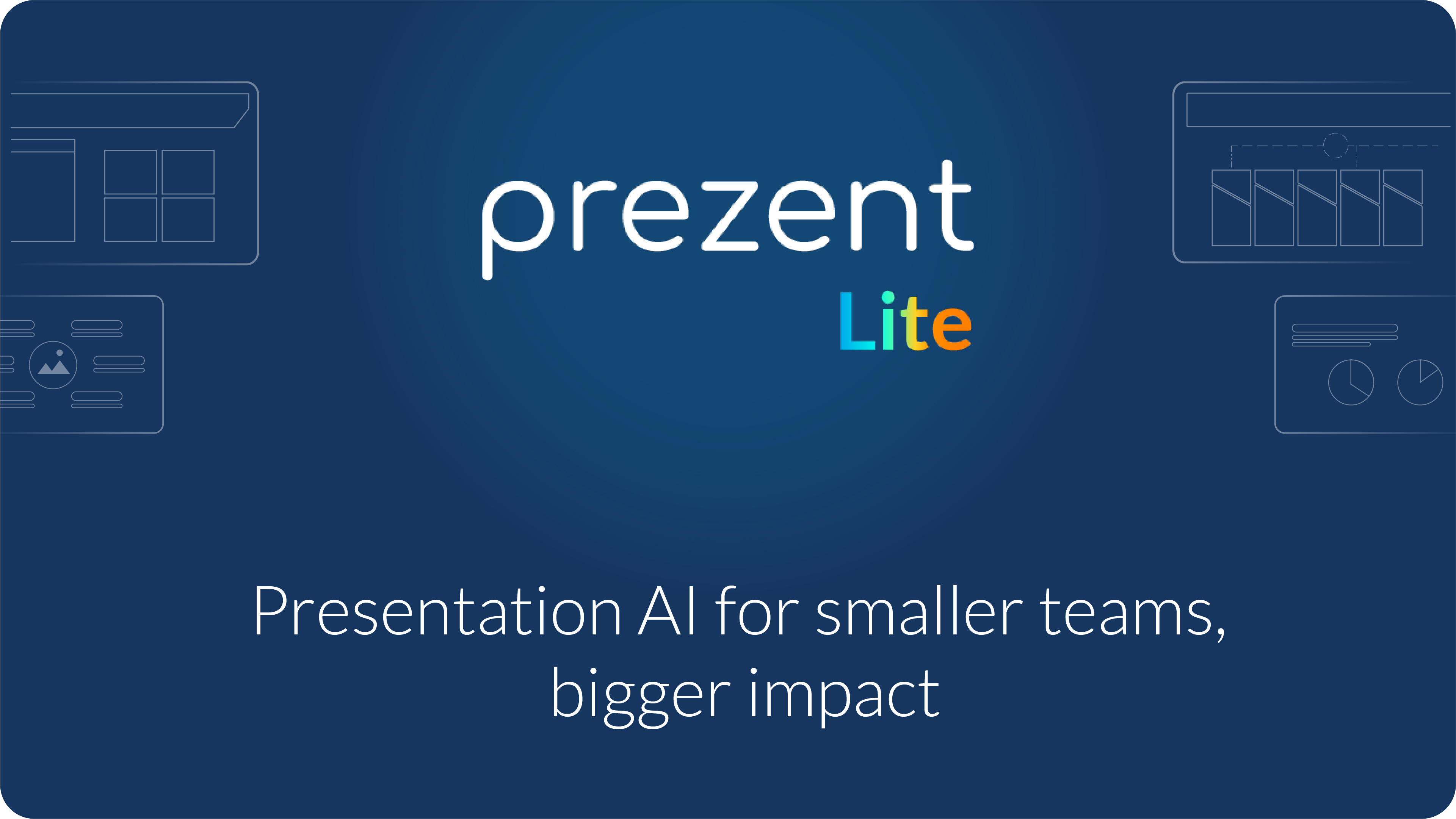
.jpg)



